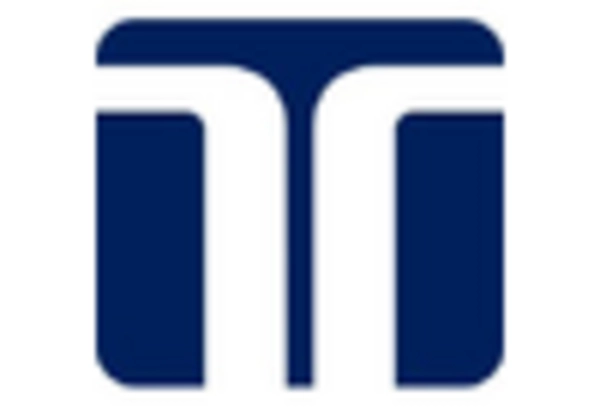Growing Geriatric Population
The demographic shift towards an aging population in Italy is a significant driver for the tracheostomy products market. With projections indicating that individuals aged 65 and older will constitute nearly 30% of the population by 2050, the demand for medical interventions, including tracheostomy, is expected to rise. Older adults are more likely to suffer from chronic respiratory conditions, necessitating the use of tracheostomy products for effective management. This demographic trend suggests a sustained increase in market demand, as healthcare providers adapt to the needs of this growing patient segment. Additionally, the focus on improving quality of life for elderly patients may lead to more frequent use of tracheostomy interventions, further propelling market growth.
Advancements in Medical Technology
Technological innovations play a pivotal role in shaping the tracheostomy products market. The introduction of advanced materials and designs enhances the safety and comfort of tracheostomy devices. For instance, the development of cuffed tracheostomy tubes with improved sealing capabilities reduces the risk of aspiration and enhances patient safety. Additionally, the integration of smart technology in tracheostomy products, such as monitoring systems that track airflow and pressure, is gaining traction. These advancements not only improve clinical outcomes but also increase the efficiency of healthcare delivery. As hospitals and clinics in Italy adopt these cutting-edge technologies, the tracheostomy products market is expected to witness substantial growth, potentially increasing by 15% annually over the next five years.
Government Initiatives and Funding
Government initiatives aimed at improving healthcare infrastructure in Italy significantly impact the tracheostomy products market. Increased funding for respiratory care programs and the establishment of specialized centers for airway management are likely to enhance access to tracheostomy procedures. The Italian Ministry of Health has allocated substantial resources to support the development of respiratory health services, which may lead to a rise in the number of tracheostomy surgeries performed. This, in turn, drives demand for associated products. Furthermore, public health campaigns focused on respiratory health awareness may encourage early intervention, thereby increasing the need for tracheostomy solutions. As a result, the market could experience a growth rate of approximately 12% over the next few years.
Rising Incidence of Respiratory Disorders
The increasing prevalence of respiratory disorders in Italy is a crucial driver for the tracheostomy products market. Conditions such as chronic obstructive pulmonary disease (COPD) and asthma are becoming more common, leading to a higher demand for tracheostomy interventions. According to recent health statistics, respiratory diseases account for approximately 10% of all hospital admissions in Italy. This trend suggests a growing need for effective airway management solutions, including tracheostomy products. As healthcare providers seek to improve patient outcomes, the market for these products is likely to expand significantly. Furthermore, the aging population in Italy, which is projected to reach 23% by 2030, may further exacerbate this demand, as older individuals are more susceptible to respiratory issues.
Increased Focus on Home Healthcare Solutions
The shift towards home healthcare solutions in Italy is emerging as a vital driver for the tracheostomy products market. As healthcare systems evolve, there is a growing emphasis on providing care in home settings, particularly for patients requiring long-term respiratory support. This trend is partly driven by the desire to reduce hospital readmissions and improve patient comfort. Consequently, the demand for home-use tracheostomy products, such as portable suction devices and home care kits, is likely to increase. Market analysts suggest that this segment could grow by approximately 10% annually as more patients and families seek to manage tracheostomy care at home. This shift not only enhances patient autonomy but also presents new opportunities for manufacturers in the tracheostomy products market.

















Leave a Comment